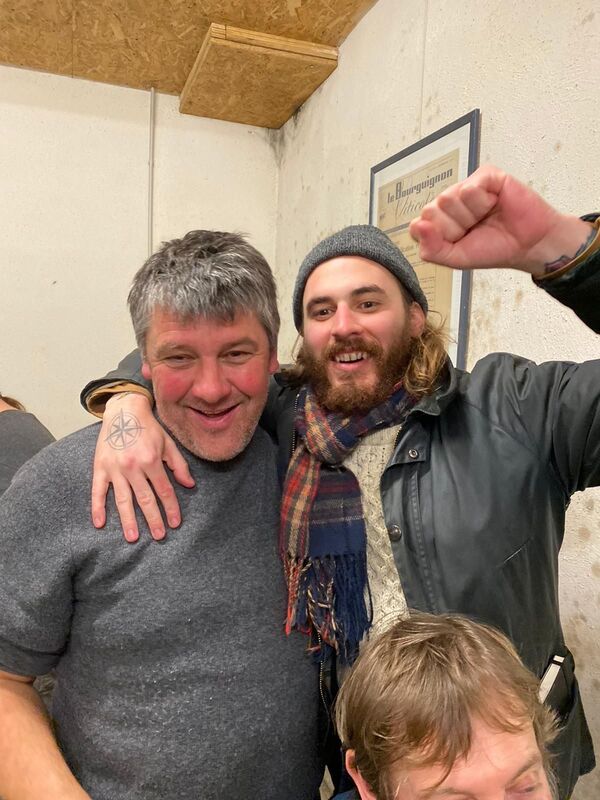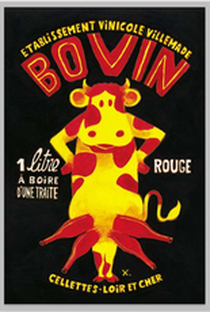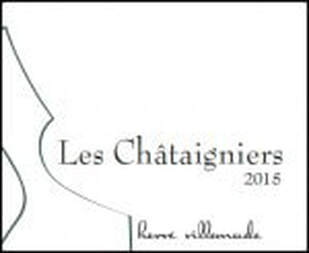Domaine du Moulin, Herve Villemade, Cheverny
AOCs: Cheverny, Cour-Cheverny
Varieties: Chardonnay, Chenin Blanc, Sauvignon Blanc, Menu Pineau, Romorantin, Gamay, Pinot Noir
Viticulture: Organic
Size: 25 hectares
Terroir: Clay, Sand, Silex, Limestone
Varieties: Chardonnay, Chenin Blanc, Sauvignon Blanc, Menu Pineau, Romorantin, Gamay, Pinot Noir
Viticulture: Organic
Size: 25 hectares
Terroir: Clay, Sand, Silex, Limestone
Herve Villemade has family roots in Cellettes, a small town in the Loire Valley of France, going back multiple generations. Since taking over in 1995, he has grown his estate to include the original 8.5ha owned by his parents, an additional 8ha that he has purchased over the years, and the difference being comprised of parcels that he rents. At the beginning, the vines were farmed conventionally (as that is they way his parents farmed) using herbicides and fungicides, and the wines were made the same way with lab yeasts and additives.
It wasn’t until a few years later that he tasted wines made by Marcel Lapierre in Beaujolais and Thierry Puzelat at Clos du Tue-Bouef in nearby Les Montils, both of whom he cites as his key influences to start doing things the natural way, that his eyes were opened. Herve immediately began experimenting with zero-sulfur winemaking, but quickly realized that in order to do this, he would need higher quality fruit. This realization lead him to begin the arduous task of converting the entirely to organic farming starting in 2000 and ultimately shaping the domaine as we know it today.
All of Herve’s vines fall within the Cheverny and and Cour-Cheverny AOCs and are planted in a mix of clay and sandy soils with silex (flint) stones in many of the parcels and a limestone base. As mentioned, he farms organically (certified) and Herve does most of the vineyard work on his own. In the cellar Herve works with native yeasts for all fermentations in élevage is done in a range of different vessels: concrete tank, foudre, tronconic vats, neutral barrique, and even amphora. Very little SO2 is used, if any, depending on the cuvée. Herve makes a wide range of different cuvées, all of which are stunning examples of classic, natural wines of the region. To us, they would be the closest to what these wines would have tasted like if they were made here 50 years ago.
It wasn’t until a few years later that he tasted wines made by Marcel Lapierre in Beaujolais and Thierry Puzelat at Clos du Tue-Bouef in nearby Les Montils, both of whom he cites as his key influences to start doing things the natural way, that his eyes were opened. Herve immediately began experimenting with zero-sulfur winemaking, but quickly realized that in order to do this, he would need higher quality fruit. This realization lead him to begin the arduous task of converting the entirely to organic farming starting in 2000 and ultimately shaping the domaine as we know it today.
All of Herve’s vines fall within the Cheverny and and Cour-Cheverny AOCs and are planted in a mix of clay and sandy soils with silex (flint) stones in many of the parcels and a limestone base. As mentioned, he farms organically (certified) and Herve does most of the vineyard work on his own. In the cellar Herve works with native yeasts for all fermentations in élevage is done in a range of different vessels: concrete tank, foudre, tronconic vats, neutral barrique, and even amphora. Very little SO2 is used, if any, depending on the cuvée. Herve makes a wide range of different cuvées, all of which are stunning examples of classic, natural wines of the region. To us, they would be the closest to what these wines would have tasted like if they were made here 50 years ago.
WINES
|
Bulles Rose is a wine that is not made every vintage. Usually a blend of Gamay and Pinot Noir, this pét nat has pretty fruit and mineral components
|
Bulles is a pét nat made from a blend of Chardonnay, Chenin Blanc, and a local grape called Menu Pineau that sees a full year élevage on the lees before release.
|
Bovin is another negoce wine made from 100% certified organic Gamay made with minimal extraction. Light and gulpable, and packaged in a convenient 1-liter size. Bottled with zero sulfur.
|
|
His Cheverny Blanc is a blend of Chardonnay and Sauvignon Blanc (the blend required by AOC law). Aged in foudre, it yields a crisp, grassy wine that is quite complex.
|
Cheverny Rouge Gamay and Pinot Noir made entirely in concrete tank. Juicy, and bright, but with enough earthiness to balance everything out.
|
Cheverny Rose is a lip-smacking blend of Gamay and Pinot Noir. A bright rosy hue in color with vivid fruit. Simple, fresh, and delicious.
|
|
La Bodice is his more serious Cheverny Blanc. Also a blend of Chardonnay and Sauvignon Blanc, it is aged in a combination of 500L barrels (some of them new) and neutral foudre which he blends together in tank before bottling. Much more structured and dense.
|
Les Saules is his entry-level Cour-Cheverny, meaning this is 100% Romorantin (the only grape allowed in this AOC by law). Vines planted in clay and silex soils over limestone. Fermented in tronconic vat; aged in concrete egg. More forward in its youth.
|
Les Souchettes is an interesting cuvée made from the local grape Menu Pineau. Herve partially replanted this parcel in 2015 as many of the oldest vines had perished. To replace those vines he took massale selections from his other old parcels of Menu Pineau. Electric acidity and deep minerality.
|
|
Les Acacias is his Cour-Cheverny that is fermented and aged in a combination of neutral barrels of different sizes. Vines are between 35 and 60 years old. This needs some time in the cellar.
|
Les Chataignieres is Romorantin (also Cour-Cheverny) sourced from a single parcel of vines planted in 2008. Soils are a mixtured of sand and flint. Fermented and aged in amphora resulting in a more rich, round, and spicy wine. Also quite age-worthy.
|
Desire is Herve’s most important red cuvée. Made from 100% Pinot Noir, all of the grapes are destemmed and put directly into amphora for six months. After this period, it is pressed off the skins into smaller amphora where it will rest another three months before bottling. Minimal sulfur additions are made if necessary, and sometimes this wine sees no sulfur at all. Elegant, deep, and structured. This wine ages beautifully.
|
Herve’s Sauvignon Blanc is made with organic negoce fruit fermented and aged in tank. An easygoing quaffer or everyday drinking.
Les Ardilles is much more serious. Mostly Pinot Noir with the rest Gamay, it is sourced from a single parcel of old vines planted in clay over limestone. 3 week maceration, fermented in concrete tank and aged in a combination of amphora and neutral barriques. Very low SO2. Herve calls this his “Nuits-Saint-Georges in Cellettes”.














